
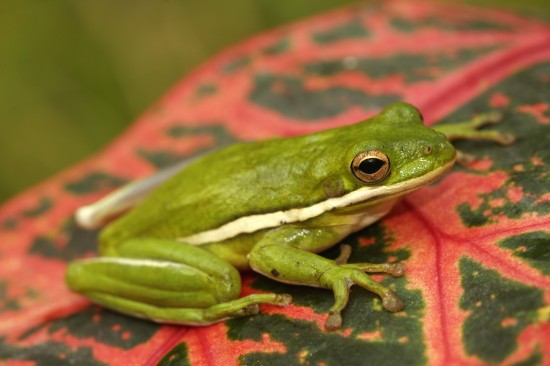
When deciding on a frog as a pet, many keepers will select one of the ‘standard’ species most frequently stocked by exotic pet shops, such as the large and placid White’s tree frog (Litoria caerulea), or maybe the iconic Red Eyed tree frog (Agalychnis callidryas) for more experienced keepers. However, if you’re looking for something a bit less common yet relatively hardy and easy to keep, the USA or American green tree frog (Hyla cinerea) is well worth considering. Although not often found in pet shops, captive-bred specimens of this species are often available to order through exotic pet retailers or specialist frog breeders, and make charming and delightful terrarium subjects.
Originating from the sub-tropical climates of the southeastern United States, from North Carolina through to Florida and Louisiana, this is a bold and gregarious little arboreal frog that is typically found in areas of shaded vegetation around the edges of ponds and lakes, or in floodplain meadows and swamp lands. Slighter smaller than its European cousin Hyla arborea, the USA green is a medium sized frog averaging around 1.5 inches in length when fully grown, and with a typical lifespan of around 5-7 years in captivity. They are a particularly attractive species, usually being a vibrant apple green speckled with tiny white or yellow dots across their backs and flanks with a pale coloured underside and a white or cream-coloured lateral band that runs from their top jaw along their sides, although their colours will vary through shades of olive green to deep brown according to their surroundings and the influence of environmental factors such as temperature and humidity. In the USA where this tree frog is relatively common in the pet trade, a handful of very light lime-yellow coloured albinos with pale pink eyes, and turquoise-coloured ‘blue’ morphs are sometimes kept and bred in private collections.
American green tree frogs are mainly nocturnal in nature, meaning they tend to spend most of the day snoozing in their preferred resting spot hidden amongst leaves, and becoming most active in the evenings and early night-time when they are likely to be heard calling in their distinctive high-pitched and surprisingly loud voices by inflating their throat pouches. As with several other Hyla species, studies have shown that American greens have a range of complex vocalisation patterns including distinct songs for courtship, navigation and alarm, and in response to environmental changes such as rainfall or a drop in air pressure. In captivity, these tree frogs will often also call in response to noises they encounter in the home such as the sound of the radio, washing machine, vacuum cleaner or even mobile phones ringing.
American greens can be housed quite happily in pairs or small groups provided the enclosure used is large enough to allow each frog to establish its own preferred areas in which to express its’ full repertoire of behaviours and avoid larger individuals from dominating the best basking or calling spots, or eating more of its fair share of food. An adult pair will need a minimum of 40 cubic litres (just under 10 gallons, or around 12 x 12 x 18 inches) of space which is best provided by means of an arboreal style glass terrarium or converted glass or acrylic aquarium with a securely fitting mesh lid. This may be furnished with a selection of naturalistic decor including cork branches, Mopani wood pieces and vines, and either real or artificial plants to replicate a densely vegetated sub-tropical habitat. These must be cleaned thoroughly before use to remove all traces of chemicals from their surfaces which may be harmful to the frogs. Artificial plants have the advantages of being easy to clean and easy to install, although real plants are better for retaining humidity in the enclosure and are generally more aesthetically pleasing. If live plants are to be used, it is essential that they are robust enough to withstand the frogs jumping and climbing about on them, and that they are properly identified to ensure they are not harmful species with irritating or toxic sap or leaves. Examples of hardy live plants that may be used in a tree frog terrarium include Guzmania and Cryptanthus bromeliads, creeping fig (Ficus pumila), and heartleaf plants (Philodendron sp.) which are easily obtainable from most garden centres although they are typically sold in pots containing soils that are high in chemical additives which can be harmful to amphibians, and so this must be carefully washed away from the roots and the plants then replanted into fertiliser- and pesticide-free organic peat or moss before being placed into the terrarium where they can either be left in the pots or planted directly into the substrate itself. Coco humus, course-grade reptile-safe orchid bark, or sheets of organically grown moss can all be used as substrates.
The addition of cork or coco-fibre panels to the terrarium back and side walls of the terrarium will help retain humidity and allow a surface for climbing plants to graft to and grow. A large, shallow pool of clean water should be provided at around 1cm deep, or just enough to cover the frogs’ legs as they sit in the water – any deeper and there is a risk the frog may lose its footing and drown. All water going into the terrarium, including that used in misting bottles or automated spraying systems, must first be treated using a suitable tap water conditioner such as Exo-Terra’s ‘Aquatize’® or Zoo Meds’ ‘Reptisafe’®, to remove the chloramines and traces of ammonia and heavy metals that are particularly toxic to frogs. The water bowl should be cleaned out and refilled daily to avoid a build-up of harmful bacteria or the development of fungal spores which can lead to skin irritation or infections.
USA green tree frogs require a gentle ambient temperature of around 21-23°C (69.8-73.4°F) in the terrarium and a slightly warmer basking zone of around 25°C (77°F) which can be provided by means of a thermostatically-controlled heatmat fixed to the outside wall, or in a larger terrarium a very low power (15 watt maximum) incandescent bulb can be used in a reflector positioned at one end above the mesh lid, however care must be taken to use a moisture-resistant fitting to ensure that the humidity rising from the enclosure does not cause a potentially dangerous electrical failure. The temperature may be allowed to drop to around 20°C (68°F) at night. Although many frog enthusiasts keep their USA green tree frogs in excellent health without the use of full spectrum UV lighting, a photoperiod of up to 8 hours per day in the summer months (May – August) using a low-output 2% daylight UV tube may have some attributed benefits in regulating this species breeding cycles as well as stimulating plant growth in the terrarium. The relative humidity inside the enclosure should be maintained at 50-70% through daily misting using a handheld bottle or automated spray or fogging system.
American greens generally have excellent appetites and should be provided with a varied diet of suitably sized livefoods including small crickets, locust hoppers, flightless fruit flies and freshly moulted (white bodied) mini mealworms. Fresh grated carrot, crushed high-protein cat biscuits and flaked fish food can be used for gutloading feeder insects 12 hours prior to feeding, and an amphibian-specific multivitamin and calcium/D3 supplement poweder should be dusted over food every other day for juveniles and twice weekly for adult frogs. Small silkworms, butterworms and clean earthworms can also be offered as treats to adults, while small froglets will often accept live fish foods such as daphnia from a very shallow dish of water. Food should be offered in the early evening when the frogs are just becoming active, and any uneaten insects removed the following morning. A healthy frog with good body condition will appear plump with smooth, well-hydrated skin, and with only the terminal point of the tail-bone, known as the ‘pin’ visible as a small point above the frogs’ bottom. Underweight frogs may be identified by the top of the pelvis and spine being visible as angular projections along the frogs’ rump and back – care should be taken with such animals to ensure they are not being bullied, and they may need to be separated and placed into a quarantine tank where their feeding and body condition can be monitored until they reach a healthier weight.
Being a very hardy and prolific species, American greens are relatively straightforward to breed under optimal captive conditions, with adults becoming sexually mature at 1 year of age. Determining the gender of adult frogs is based on two key factors – Firstly, adult females tend to be bigger and plumper than males, and secondly, adult males can be identified by their loud and raucous mating calls which they will often repeat in 20 second bouts every few minutes during the evening. Adult males also tend to become more active and bold during the breeding season, and may be seen on their preferred calling platform, usually a branch or broad leaf close to the water, while they enthusiastically sing their intentions to any females who may be listening. In the wild, the frogs’ reproductive physiology – the hormonal influences that prompt the production of eggs and sperm – is triggered by the environmental changes in photoperiod, temperature and humidity that occur in springtime. In the south-eastern USA, warm temperatures and spring showers in early April stimulate the frogs to begin breeding, from which point they will continue to mate and produce eggs through the summer months into late August. Provided they are a sexually mature male and female pair, captive tree frogs can be stimulated to begin breeding by gradually increasing the terrarium temperature by 1-2C and increasing the frequency of misting to several times a day. The author has also had success in using a home-made rain system – a length of aquarium airline with multiple small holes made along its length with a hot needle is attached across the lid of the terrarium and fixed to a small water pump in a reservoir on a timer to create ‘rain showers’ for a minute at a time several times each day and slightly more frequently in the evening hours.
After around a week of increased temperatures and rain, the frogs will usually be found in amplexus, with the smaller male holding on tightly to the larger female who will often end up carrying him around for several hours or even days at a time during the mating period. Their water pool can be made fractionally deeper at this time to a depth of 1.5-2cm, and the addition of some clean artificial silk leaves to the water provides a safe area for the pair to mate and a suitable surface for the female to attach her 250-400 small, cream coloured eggs to. After spawning, the eggs can be removed and very carefully transferred to a hatchery – a small glass tank, plastic tub or petri dish - using a clean plastic spoon where they will gradually darken to brown-black until the tadpoles break free of their jelly shell after around 7 days. Tadpoles should be reared in containers of treated water with bunches of the oxygenating plant known as Canadian pond weed (latin name) which is widely available from aquatics pet shops, and fed on a diet of small aquatic livefoods such as daphnia and small pinches of finely-ground flaked fish food. Commercial tadpole rearing diets are now also available from some specialist amphibian suppliers and these are generally very well accepted and specifically designed to meet the tadpoles precise nutritional needs. The tadpoles begin to metamorphasise after 2 weeks, and after around 60 days they leave the water as fully formed froglets around 1.5cm in length, when they can be housed in small groups and raised on a mixture of micro crickets and flightless fruit flies.
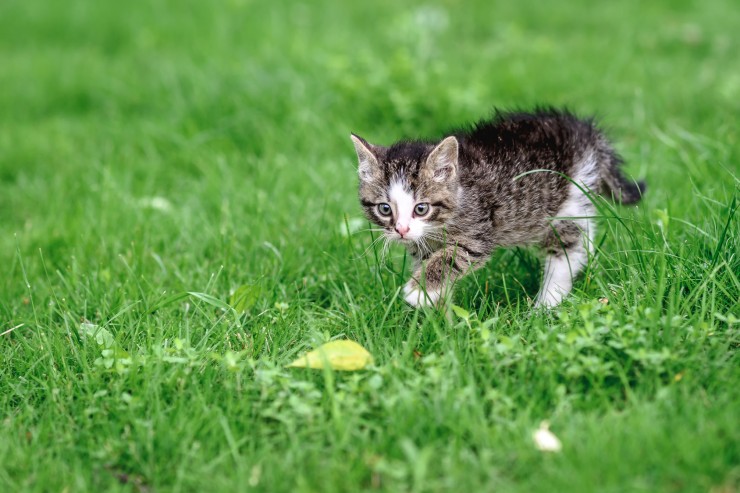 Some Frequently Asked Questions About Cats And Hunting Behaviour
Some Frequently A
Some Frequently Asked Questions About Cats And Hunting Behaviour
Some Frequently A
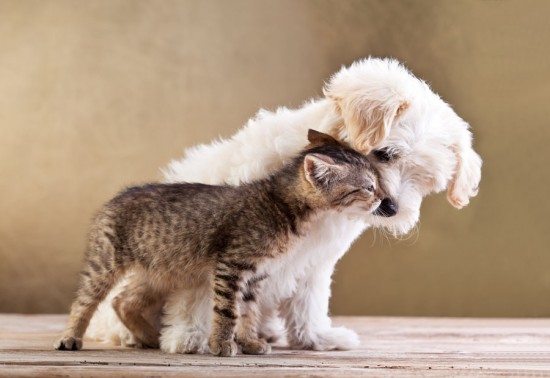 Pet Insurance - Ten Do’s And Don’ts To Consider When Protecting Your Pet
Pet Insurance - T
Pet Insurance - Ten Do’s And Don’ts To Consider When Protecting Your Pet
Pet Insurance - T
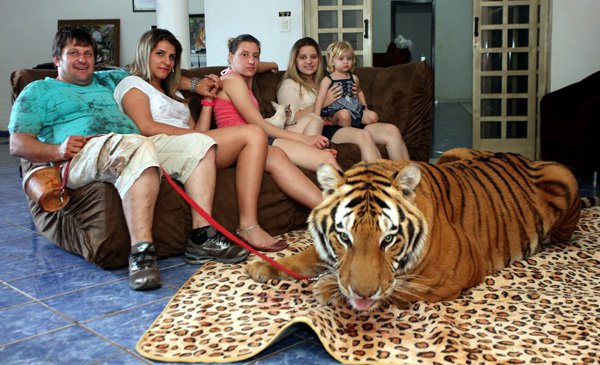 How Often Do You Need to Replace Your Cat Litter with New One?
How Often Do You Need to Replace Your Cat Litter with New
How Often Do You Need to Replace Your Cat Litter with New One?
How Often Do You Need to Replace Your Cat Litter with New
 Does Feeding Dry Food To My Dog Help Keep Their Teeth In Good Condition?
Does Feeding Dry
Does Feeding Dry Food To My Dog Help Keep Their Teeth In Good Condition?
Does Feeding Dry
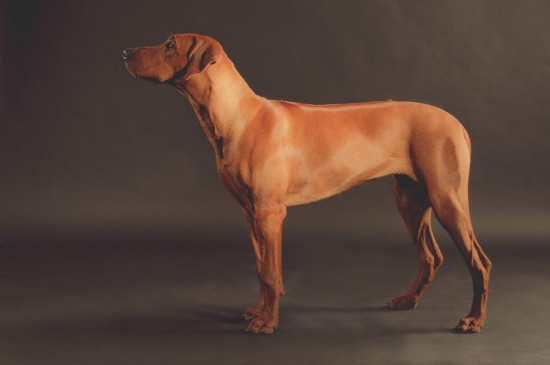 Dogs Body Condition Scoring Explained
Dogs Body Conditi
Dogs Body Condition Scoring Explained
Dogs Body Conditi
Copyright © 2005-2016 Pet Information All Rights Reserved
Contact us: www162date@outlook.com